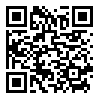Mon, Dec 15, 2025
[Archive]
Volume 19, Issue 5 (Suppl- 2021)
IJRM 2021, 19(5): 128-128 |
Back to browse issues page
Download citation:
BibTeX | RIS | EndNote | Medlars | ProCite | Reference Manager | RefWorks
Send citation to:



BibTeX | RIS | EndNote | Medlars | ProCite | Reference Manager | RefWorks
Send citation to:
Taher Mofrad SMJ, Rezaei Topraggaleh T, Ziarati N, Ashrafzade A, Seifi S, Shahverdi A. O-27 Effects of knockout serum replacement on the quality of frozen-thawed human spermatozoa. IJRM 2021; 19 (5) :128-128
URL: http://ijrm.ir/article-1-2959-en.html
URL: http://ijrm.ir/article-1-2959-en.html
1- Department of Embryology, Reproductive Biomedicine Research Center, Royan Institute for Reproductive Biomedicine, ACECR, Tehran, Iran.
2- Department of Anatomical Sciences, Faculty of Medicine, Urmia University of Medical Sciences, Urmia, Iran.
3- Department of Genetics, Reproductive Biomedicine Research Center, Royan Institute for Reproductive Biomedicine, ACECR, Tehran, Iran.
4- Department of Embryology, Reproductive Biomedicine Research Center, Royan Institute for Reproductive Biomedicine, ACECR, Tehran, Iran. ,shahverdi@royaninstitute.org
2- Department of Anatomical Sciences, Faculty of Medicine, Urmia University of Medical Sciences, Urmia, Iran.
3- Department of Genetics, Reproductive Biomedicine Research Center, Royan Institute for Reproductive Biomedicine, ACECR, Tehran, Iran.
4- Department of Embryology, Reproductive Biomedicine Research Center, Royan Institute for Reproductive Biomedicine, ACECR, Tehran, Iran. ,
Abstract: (523 Views)
Background: Cryopreservation of human spermatozoa is an important technique in the treatment of male infertility. This procedure is regularly used for preserving the fertility potential of young male patients with cancer before chemo- or radiotherapy. It is well known that the freeze-thaw practice leads to the functional and structural damages to human spermatozoa, mainly due to the formation of ice crystals, oxidative stress, and osmotic imbalance. In order to decrease sperm cryo-damages and improve the quality of post-thawed spermatozoa, factors, such as the composition of the freezing medium, methods of freezing (i.e., slow, rapid, and vitrification), and the way of packaging the samples (cryotube or straw) have been largely investigated. Knockout serum replacement has been recently used as an effective serum substitute for culture of several mammalian cells and cryopreservation of some cell types. It is a rich source of amino acids, antioxidants, vitamins, and some trace elements and would be preferable due to the components’ reliability, no varies between batches and the absence of probably microbial agents.
Objective: In this study, we used KSR as a serum substitute in the freezing medium for sperm cryopreservation. For this purpose, we designed a simple handmade freezing medium that consisted of sucrose and different concentration of HSA or KSR for the rapid freezing of human sperm cells and compared them with commercial freezing medium.
Materials and Methods: Twenty semen samples were taken from normozoospermic men who referred to the Royan Institute. After the swim-up process and the evaluation of fresh sample, supernatants were divided into five groups. The four aliquots were diluted with a sucrose solution containing different percent (5%, 10%) of HSA and KSR. The other aliquot was diluted with a freezing medium containing (Sperm-Freeze) as a control group (CON). The samples were hold in liquid nitrogen vapor for 15 min and then plunged into the liquid nitrogen and cryopreserved for 1 month. After thawing, sperm parameters including motility characteristics, viability, acrosome integrity and DNA intactness were assessed.
Results: All of sperm parameters were significantly decreased in cryopreserved samples compared to the fresh group. There were no significant differences in the motion characteristics of spermatozoa between the control and experimental groups. However, the highest sperm viability, acrosome integrity and DNA intactness was achieved by the addition of 10% KSR to the freezing medium, which was statistically significant when compared with other experimental groups.
Conclusion: In conclusion, our results demonstrated that the addition of 10% KSR to the sucrose-based freezing solution improves the quality of post-thawed human spermatozoa, including motility, viability, acrosome integrity, and DNA integrity and may have potential to develop chemically defined freezing medium.
Objective: In this study, we used KSR as a serum substitute in the freezing medium for sperm cryopreservation. For this purpose, we designed a simple handmade freezing medium that consisted of sucrose and different concentration of HSA or KSR for the rapid freezing of human sperm cells and compared them with commercial freezing medium.
Materials and Methods: Twenty semen samples were taken from normozoospermic men who referred to the Royan Institute. After the swim-up process and the evaluation of fresh sample, supernatants were divided into five groups. The four aliquots were diluted with a sucrose solution containing different percent (5%, 10%) of HSA and KSR. The other aliquot was diluted with a freezing medium containing (Sperm-Freeze) as a control group (CON). The samples were hold in liquid nitrogen vapor for 15 min and then plunged into the liquid nitrogen and cryopreserved for 1 month. After thawing, sperm parameters including motility characteristics, viability, acrosome integrity and DNA intactness were assessed.
Results: All of sperm parameters were significantly decreased in cryopreserved samples compared to the fresh group. There were no significant differences in the motion characteristics of spermatozoa between the control and experimental groups. However, the highest sperm viability, acrosome integrity and DNA intactness was achieved by the addition of 10% KSR to the freezing medium, which was statistically significant when compared with other experimental groups.
Conclusion: In conclusion, our results demonstrated that the addition of 10% KSR to the sucrose-based freezing solution improves the quality of post-thawed human spermatozoa, including motility, viability, acrosome integrity, and DNA integrity and may have potential to develop chemically defined freezing medium.
Type of Study: Congress Abstract |
Subject:
Pregnancy Health
Send email to the article author
| Rights and permissions | |
 |
This work is licensed under a Creative Commons Attribution-NonCommercial 4.0 International License. |




